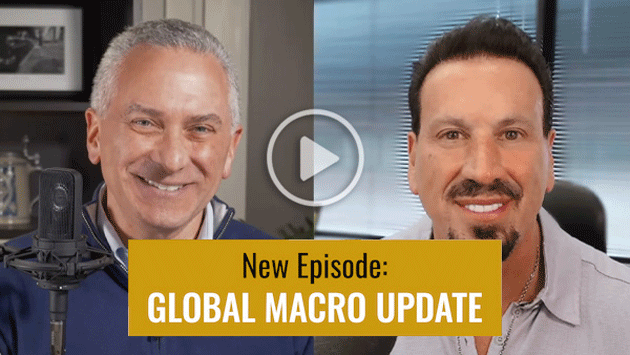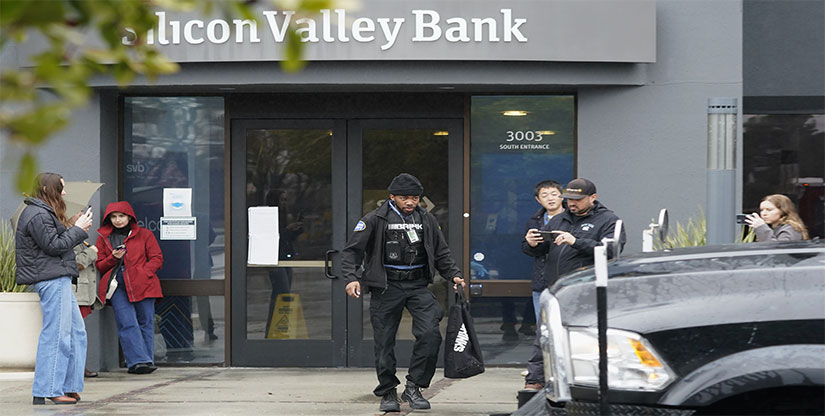Bank Failures and the Return of MBS
-
 Ed D'Agostino
Ed D'Agostino
- |
- March 24, 2023
- |
- Comments
“History never repeats itself, but it does often rhyme.” –Mark Twain
Mortgage-backed securities (MBS) seem to pop up every time there is a bank failure.
Back in ’08, they nearly brought down the global financial system. Wall Street aggregated pools of what turned out to be bad loans, sliced them into tranches, slapped a pretty credit rating on them, and stuffed pension funds and banks with what were billed as safe investments.
The story is different today. The loans underlying MBS are considered far safer than the ’08/’09 vintages. Yet they played a key role in the demise of Silicon Valley Bank. SVB had over $75 billion in agency MBS on its books. That was not the problem. SVB mismanaged—or flat out didn’t manage—its interest rate risk.
As the Fed hiked interest rates at an unprecedented but well-advertised pace, SVB’s portfolio of MBS declined in value. And as deposits left the bank, SVB was forced to sell some of its MBS and US government bond portfolio. By realizing the loss, SVB exposed its poor interest rate risk management and trigged a bank run.
My guest this week, Barry Habib of MBS Highway, breaks down in detail where SVB got it wrong and how mortgage-backed securities worked against the bank.
You can find a transcript of our discussion here.
C+MBS = Trouble
SVB’s problems were more about risk management than real estate loans, but that doesn’t mean there aren’t problems in the world of MBS.
Commercial real estate, specifically office space, is in serious trouble.
Liquidity in the office sector is drying up. The latest banking crisis will only make it worse. Approximately $17 billion in office-backed Commercial MBS (CMBS) is due for refinancing in 2023.
PIMCO, Brookfield, and even Blackstone (!) have defaulted on CMBS notes this year. If the biggest, most respected players in the space are handing back the keys, others will follow suit.
This sets up a serious problem for cities, particularly cities with aging office inventory.
Here’s an example: Say you are a real estate investor. In 2016, you paid $50 million for a Class B office building. You borrowed 70% of the purchase price, or $35 million. Your note was at 3% and your loan amortized over 30 years, with a seven-year term.
You have to refinance your note this year, but the lending landscape has completely changed. Your building might be one-third empty due to the work-from-home trend. Even if the leases are still in place, if the leased space is not fully occupied, lenders might not underwrite your revenue the same way they would have in 2016 due to increased renewal risk.
Banks might not take your deal, forcing you to look elsewhere for a refi. Loan-to-value expectations are closer to 50% if you can find the debt, and your interest rate will be approximately 7%. Since your loan was amortizing over 30 years, you’ve barely put a dent in your principal.
What are your choices? You can bring another $10 million in equity to the table to get your new loan, or you can default.
This is a simplification, but not by much. It’s hard to extend or restructure a loan that has been securitized because you aren’t dealing with one lender—you have hundreds.
Now let’s consider the city where your office building is located. Cushman & Wakefield estimates up to 25% of US office buildings will be obsolete by the end of the decade. The best office buildings will have a better shot at attracting and retaining tenants. Tenants are requiring less square footage. And credit is hard to come by. All of this adds up to a vacancy problem that is hard to fix.
One answer seems obvious: convert the office space into much-needed housing. Office space is notoriously difficult to convert. You need a very low-cost basis for an office-to-residential conversion to make sense. Lenders will be reluctant to take that big of a bath. They may rather sit on the asset, hoping for a turnaround.
City managers who see this coming should act now to put incentives in place to facilitate the conversion of office buildings to new uses. Those who do will maintain or even revitalize their urban cores and office suburbs. I suspect most will be caught flat-footed.
I checked with my friend Joe Anthony of Sterling Legacy Real Estate. He invests in multifamily, but he’s plugged in when it comes to corporate real estate. I asked him for his take on office buildings. His reply:
“I think we will see vacant office space for many years to come. The value transition may be similar to what retail went through years ago. However, the adaptive reuse of large buildings will be more difficult. I would not touch an office investment with a 10-foot pole.”
Thanks for tuning in to Global Macro Update. And don’t forget to register for our Strategic Investment Conference. Howard Marks will be back, along with Louis Gave, Barry Habib, John Burns, Lacy Hunt, Jim Bianco… and a few new friends I’ll think you’ll want to hear from.
Are you a city planner? A CMBS issuer? Investor in office buildings? Do you have insight into this problem? Please take a minute to reply to this email. We want to hear from you.
Best regards,

Ed D’Agostino
Publisher & COO
If you prefer to listen to Global Macro Update, you can do so here:

 Ed D'Agostino
Ed D'Agostino



